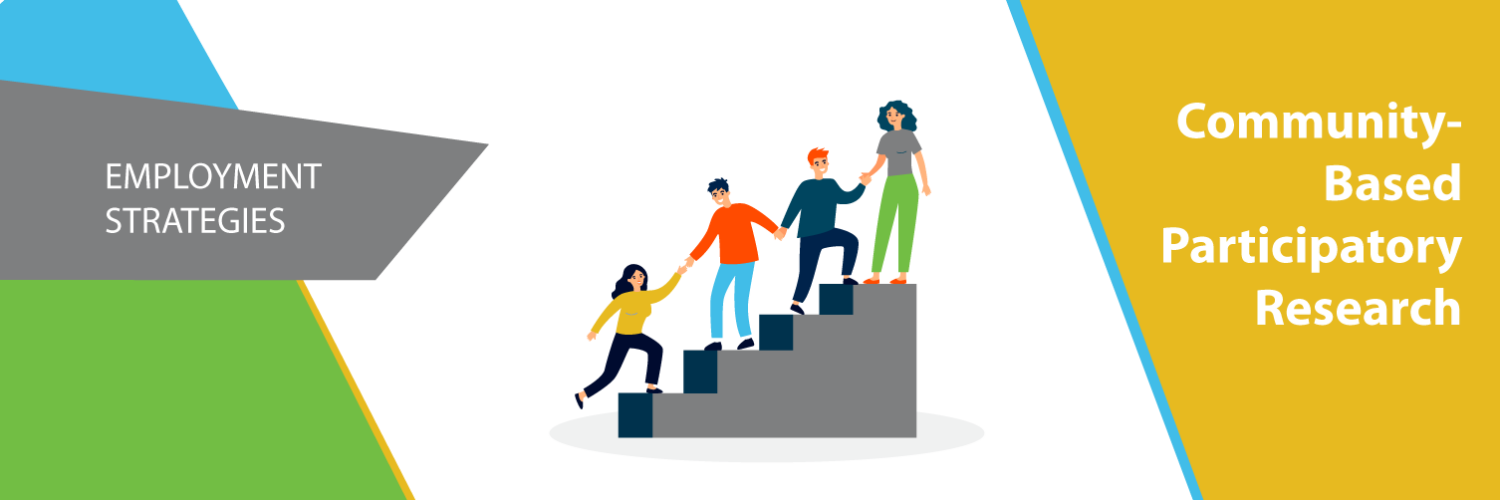Community-based participatory research recognizes the strengths of all community partners and involves them equally in the research process. It intentionally changes and equalizes the power relationship between researchers and those being researched. Its goal is to develop services and interventions that meet a community’s complex needs, as well as create social change that improves the community’s health and eliminates inequities.
Source: Community-Based Participatory Research Program (CBPR) (nih.gov)
Why is it Needed?
Despite the availability of vocational rehabilitation services to people with disabilities through the state-federal vocational rehabilitation system, working-age adults with disabilities are less likely to be employed than their peers without disabilities and, if employed, have lower wages on average than those without disabilities. They are twice as likely as those without disabilities to live in poverty.
Community-based participatory research can result in services and interventions that more closely meet a community’s complex needs and result in higher quality employment outcomes for people with disabilities.
How Does it Work?
Vocational rehabilitation researchers and service providers work closely with community stakeholders to explore unique community characteristics and identify its needs, service gaps, strengths, and resources. They collaboratively develop strategies to overcome identified barriers and build on strengths. Community-based participatory research activities could include:
- Developing an assessment plan that includes community stakeholders
- Establishing Community Advisory Councils
- Engaging with stakeholders through research sessions involving:
- local vocational rehabilitation agency staff
- community-based organization representatives
- individuals with disabilities
- parent-educator groups
- interfaith groups
- other community leaders
- Using a SWOT analysis – Strengths, Weaknesses, Opportunities, Threats
- Conducting community surveys and interviews
- Developing integrated resource teams
Tips for Success
Consider using these tips for an effective community-based participatory research approach:
- Make sustainability a priority from the beginning of research.
- Design your research project as a collaboration between community stakeholders and researchers.
- Share responsibility for needs assessment, data collection, implementation, and evaluation equally between research partners.
Source: 3-Module-3_Community-Based-Participatory-Research.pdf (cswe.org)

Want to know more about how this employment strategy can be incorporated into your work? Check out these resources:

Featured Training
Watch Project E3 webcasts to gain valuable information that will help improve employment outcomes and quality of employment for people you serve.

Selected Tools and Resources
These tools and resources offer the latest information to support your practice.
- North Carolina Project E3: Poverty, Disability, and CBPR
- Project E3: Applications of Community-Based Participatory Research in Targeted Communities in 12 States
- Virginia DARS Project E3: Presentation Slides: Disability and Poverty
- NCRE Conference 2018: Community-Based Participatory Research
- Successful Models of Community-Based Participatory Research
- Community-Based Participatory Research: A Strategy for Building Healthy Communities and Promoting Health through Policy Change
- Promoting Healthy Public Policy through Community-Based Participatory Research: Ten Case Studies
- The Community Toolbox: Assessing Community Needs and Resources
- Community Based Participatory Research: Is It for You? | ASHA Journals Academy
- Community-Based Participatory Research | Society for the Advancement of Psychotherapy
- Community Toolbox: Developing and Using a SWOT Analysis
- Community Action Partnership's Data Hub
- Integrated Resource Teams Resource Roundup

Best Practices / Research
Project E3’s research summaries provide an “At-a-Glance” overview the latest research findings, as well as recommendations for best practices and how to incorporate them in your work.

Strategy Use in Targeted Communities
Several Project E3 Communities used this strategy to improve employment outcomes for their most underserved populations. They include:

